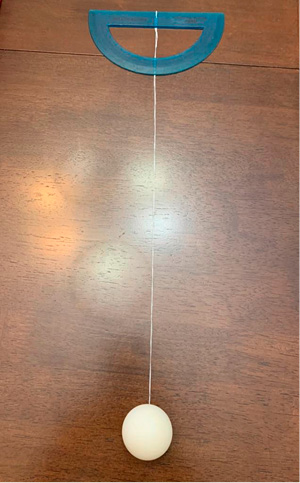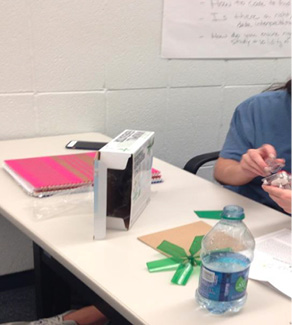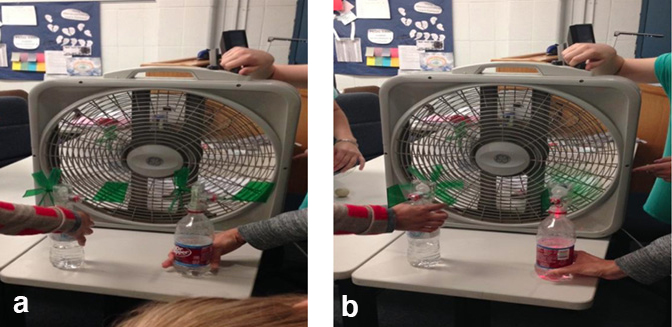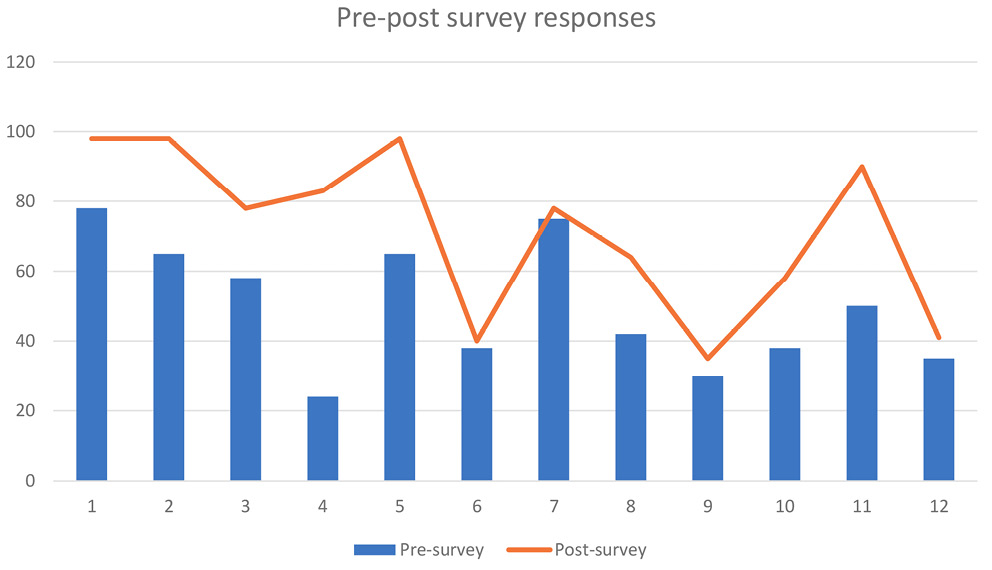Research and teaching
Assessing Preservice Teachers’ Experience With Wind Energy Education Through a Cooperative Learning Experience
The purpose of this study was to investigate knowledge and attitudes of preservice teachers toward wind energy education. The participants for this study were preservice teachers enrolled in a science methods for teachers course. The preservice teachers experienced wind energy education through cooperative learning experience and a hands-on wind energy activity. The results indicated that the preservice teachers did improve their knowledge and attitude toward green energy and cooperative learning. However, the study concluded that these preservice teachers need to be exposed to several different energy education and awareness activities.
The United States needs to develop curriculum in order to promote energy independence (Daugherty & Carter, 2010). A study conducted at Stanford University stated that complete conversion to renewable energy is possible with today’s technologies, and there is very little downside to this conversion (2015). Researchers encouraged an increase in the prominence of energy education because of its interdependency in everyday life. They supported this assertion by pointing out that relevant learning produces interest in the students and the students often create viable products for the application (Toolin & Watson, 2010). Pecen et al. (2012) focused on training high school teachers on how to implement renewable energy concepts and develop curriculum based on applied research.
In recent years, scientific minds have greatly concerned themselves with the issues related to sustainable development and have proposed solutions including Education for Sustainable Development (ESD). According to Ocetkiewicza et al. (2017) renewable energy education is for ESD. Teachers are not aware of educational principles behind sustainable development; therefore, teachers’ training is essential to raise awareness among educators about the principles of sustainable development education and changing their attitudes toward it especially at the elementary school level in order to transfer to different levels and everyone’s life. Knowing the importance of educating students about using more renewable energy sources, the purpose of this study was to investigate knowledge and attitudes of preservice teachers toward wind energy education with an aim to address the following two research questions: (1) Did preservice teachers become aware of renewable resources and their benefits? (2) Were preservice teachers able to use an anemometer to measure the wind speed and test the level of wind speed required to make the windmill model produce electricity?
Preservice teachers and renewable energy
It is important to educate both in-service and preservice teachers about renewable energy. Groves and Pugh (1999) offered insight into misconceptions held by preservice teachers at that time, and their findings were alarmingly similar to the findings of more recent studies (Esa, 2010; Hudson, 2007; Ocetkiewicza et al., 2017; Villanen, 2014), suggesting very minor improvements to the issue. Kim et al. (2019) studied engineering design and the development of the knowledge for teaching among preservice science teachers, where knowledge of design concept was used. Liarakou et al. (2009) detailed a study conducted in Rhodes, Greece, that aimed to examine teachers’ knowledge and attitudes toward renewable energy. The authors argued that teachers need to be aware of renewable energy sources and have positive attitudes toward potential changes because education provides people with necessary knowledge about renewable energy, and renewable energy cannot be implemented without social consensus. Similarly, Esa (2010) conducted a study in Malaysia, and the researcher found that positive attitudes toward the environment, along with knowledge, promotes regular contributions to the environment education and research. The study suggested that further educating preservice teachers could positively affect how teachers and students respond to the environment and to sustainable development. Hudson (2007) pointed out that education for sustainable development can lead to sustainable solutions because students are capable of investigating and offering solutions. Hudson (2007) further states that encouraging preservice teachers to participate in sustainable development education can influence their teaching practices. In the study, preservice teachers investigated issues and created sustainable development lesson plans and shared them with a group of middle school students. Villanen (2014) argued many similar points and substantiated the findings of prior research. The researcher asserted that education for sustainable development should be an integral part of teacher preparation programs. Villanen used focus groups to get input from various preschool and elementary level teachers about how to integrate education for sustainable development into their classrooms.
Furthermore, researchers in Romania explained their attempts to engage teachers in constructivist activities similar to those they are expected to include in their classroom instruction (Visa et al., 2008). The constructivist activities aimed to help teachers learn the information and use the resources to apply the lessons to their own classrooms. The activities focused on sustainability because the researchers stated that teachers and students should consistently work toward contributing toward sustainability.
Effective science teaching methods
As supported by the Next Generation Science Standards (NGSS) and various studies (Faccio et al. 2014; Lesgold, 2001; Rennie & Jarvis, 1995; Schank, 1995; Vygotsky, 1976), students learn science by doing science. Bennett (2014) demonstrated the simple and clear connection between the NGSS and problem-based learning. Both are primarily concerned with increasing students’ interest in science by encouraging students to gather qualitative and quantitative data (Bennett, 2014). Colson and Colson (2016) explained the process of creating NGSS-based education by using authentic questions, scientific practices, and big explanatory ideas. For this, effective science teaching methods should be implemented in the classroom. Ediger (2014) pointed out the various changes that science curriculum has recently undergone and how the curriculum is focusing more and more on experimentation and inquiry learning. Robinson (2016) asserted that children need to be actively involved in learning science. Teachers should show how the investigation works and then let students draw their own conclusions, allowing them to learn how to produce evidence and what this evidence communicates to others. Hegedus and Carlone (2015) stated that engineering education can help students develop creativity and skills for success in the 21st century workplace. The case in point consisted of students acting as green engineers to create their own solar ovens. The project mainly taught students that there are multiple ways to solve problems, instead of forcing the group to look for one correct answer (Hegedus & Carlone, 2015). Additionally, Boon (2010) compared the understandings of the greenhouse effect of preservice teachers to secondary students, and the researcher urged teacher training programs to capitalize on student engagement by applying the constructivist approach, particularly when teaching environmental science.
Research methods
This study focused on structuring a guided inquiry lesson plan around a windmill model. The participants were 19 preservice teachers enrolled in the teacher education program at a large public university in the southern United States. During the study, the preservice teachers were assessed with building the windmill model using the provided instructions, constructing an anemometer, and then testing the anemometer and the windmill on a three-speed box fan. As suggested by several studies, the best way to teach children science is by letting the children do science, so the lesson plan was designed to allow students to perform their own experiment and draw their own conclusions. Along with the experiment, the preservice teachers completed a prepost energy attitude survey (Morgil et al., 2006), which was administered before and at the end of the semester. For this study, 12 statements pertaining to renewable energy education and awareness (see Appendix A) out of 50 original questions were used and only binary responses were collected from the preservice teachers. These statements were provided to the preservice teachers.
The lesson plan designed for the preservice teachers was hands-on guided inquiry. The anticipatory set consisted of checking the participants’ prior knowledge on topics such as what wind is, if the wind is a renewable resource, what machine is used to turn the wind into electricity, if wind speed can be measured, and what device is used to measure wind speed. The preservice teachers then worked in groups of two or three and built their windmill models using the instructions that came with the kits. The researchers also constructed a windmill model before class to help guide students through their construction. The modeling phase consisted of talking to the preservice teachers about wind energy, introducing the mechanical components, the experiment, and anemometers. The researchers explained how the experiment was going to work and what students’ specific tasks would be. The preservice teachers were tasked with using the anemometers to calculate the wind speed of the three different settings (low, medium, and high) on a box fan, and then they used those measurements to test how much wind speed was required to convert the wind energy into usable electricity, or more specifically, to turn on the light bulb on the windmill model. Moving into guided practice, the supplies were distributed to the preservice teachers (string, Ping-Pong ball, protractor, and permanent marker) to create their anemometers. The researchers explained how to create the anemometers, including where to label the angles to actually calculate wind speed (Learning Ideas, 2012). When the preservice teachers were done labeling the wind speeds on the protractor angles, they threaded their string through the hole in the top of the protractor and tied it, so the ball hung 28–30 cm (11 or 12 in.) below the curved side of the protractor, where the markings were. After the anemometers were constructed, the groups took turns testing the wind speed of the three different fan settings, and they recorded their findings on their data sheets. To measure the wind speed of the fan, the preservice teachers held the straight end of the protractor perpendicular to the top of the box fan, so the ball hung straight down in front of the fan. They had to make sure the straight edge was level and that the ball was not in front of the center of the fan. Then the teachers stood so they could see the front of the protractor, where the markings were, and they recorded the value on their data sheets for the highest point that the string touches. This was the measured wind speed. Then they repeated this process for each of the three fan settings. After recording their wind speed data (as shown in Table 1), the preservice teachers tested their completed windmill models on each of the three fan settings to pinpoint the necessary wind speed for the windmill model to create electricity and power the light bulb. The preservice teachers’ understanding was checked by asking the groups to compare their experiment results. The preservice teachers were asked which settings the light bulb turned on and if the windmill worked. The researchers then explained that the windmill must rotate a certain number of times to produce the required energy to power the windmill. For independent practice, the preservice teachers analyzed their data from the guided practice in groups and drew conclusions about the wind speed and the wind energy. Each preservice teacher then wrote a short paragraph about the advantages and disadvantages of using wind energy, based on their research findings. Finally, the preservice teachers turned in their data sheets with their conclusions and analyses for daily grades. Then, the researchers called on certain student volunteers to summarize the lesson in their words and explain what they learned.
Findings
1. Did preservice teachers become aware of renewable resources and able to understand types of renewable resources?
The energy attitude survey questions were administered before and after the experiment and the descriptive results are presented. The survey responses were binary. The results indicated that preservice teachers had limited knowledge about renewable and green energy at the beginning of the semester. As indicated in Figure 4, the preservice teachers in general did become aware of renewable energy and understood the concept at the end of the semester. The higher scores for questions represent the percentage of preservice teachers expressing a more favorable/positive attitude toward renewable energy. Except for questions six and seven, the percent responses on the remaining 10 questions increased in the postsurvey. A paired t-test results indicated a significant difference between prepost percent survey responses (n =12, p = 0.001). The calculated Cohen’s d = 1.27. This indicated a large effect size, meaning that a magnitude of mean difference between prepost survey is very large. This suggests that to improve understanding of renewable energy and its application, more renewable energy-related experiments and activities need to be introduced to preservice teachers to make them aware of energy education knowledge. The energy prepost survey responses are depicted in Figure 4.
2. Were preservice teachers able to use an anemometer to measure the wind speed and test the level of wind speed required to make the windmill model produce electricity?
The results supported what the preservice teachers learned in the science methods course: Students learn science by doing science. Less than 25% of preservice teacher groups struggled with constructing the windmill model, but they seemed to feel more motivated because they worked through the problems with their group members and with help from the researchers in charge. All groups eventually completed construction and were able to complete the experiment in full (Figure 3). Unfortunately, one group’s windmill model did not function properly due to incorrect construction or manufacturing; the cause was unclear. However, the preservice teachers were able to use and observe another group’s model to complete their data sheet.
After working with the windmills and anemometers, the preservice teachers were fully engaged in the lesson and worked cooperatively in the experiment. Based on summative evaluation of their overall feedback and responses at the end of this activity, it was suggested that almost all preservice teachers’ conclusions and their analyses of the advantages and disadvantages of wind energy demonstrated their understanding of the content. The experiment yielded students’ responses such as:
- A lot of wind is required to make electricity.
- Windmills are expensive to create and maintain.
- Windmills do not work in certain areas.
- Wind is a clean resource that is good for the environment.
Each preservice teacher’s conclusion indicated that they understood at least that wind is a feasible option for renewable energy. Additionally, constant observation of the preservice teachers during the lesson supported the idea that guided inquiry lessons encourage students to be engaged in the lesson and actively participate in constructing their own knowledge, which proved to be effective in our lesson. The results suggested that involving students in the learning process encourages them to pay more attention and increases their overall understanding of the material. Additionally, conversations with the preservice teachers after the lesson indicated that involving preservice teachers in renewable energy projects such as this one makes them more likely to include such instruction in their future classrooms. Encouraging renewable energy education should begin with demonstrating to preservice teachers how such instruction can be effectively integrated into their classrooms. For advanced students, they can do their own calculation to relate wind speed to the angle of the string and think about the forces acting on the Ping-Pong ball.

Construction of anemometer.

Construction of a windmill using a windmill generator (green science).
| Table 1. Angles and wind speed. | |||||||||||||||||||||
|---|---|---|---|---|---|---|---|---|---|---|---|---|---|---|---|---|---|---|---|---|---|
|

Before (a) and after (b) the fan is turned on: windmill generating wind, which caused the light bulb to turn on.

Prepost survey responses.
Discussion
The findings from this study are similar to the study conducted by Esa (2010), Boon (2010), Hegedus and Carlone (2015), and Liarakou et al. (2009). Based on the results of this study, it is imperative that teachers create more lessons that allow students to construct their own understanding of the content. The current study used a constructivist approach. The constructivist activities aim to help teachers learn the information and use the resources to apply the lessons to their own classrooms. This approach is similar to the constructivist activities that Visa et al. (2008) attempted to engage teachers in, which are similar to the activities that teachers are expected to include in their classroom instruction. The findings are similar to Hudson (2007) who addressed that education for sustainable development can lead to sustainable solutions because students are capable of investigating and offering solutions. The study results indicated that the preservice teachers were able to gain knowledge about different types of renewable energy sources, their functioning, and their contribution to the electric power and energy sector. The preservice teachers were able to present content materials on renewable and green energy, present a PowerPoint presentation, and submit a write-up. The preservice teachers were able to develop lesson plans that can be taught in the K–12 classroom. Additionally, the results from the tests and survey will provide useful information and allow the course instructor to modify the course materials in the following semester. The results of this study strongly suggest that students learn best by doing. The preservice teachers, aged 21–30, were fully engaged for the majority of the lesson. These results, along with similar studies, suggest that students who actively construct their own knowledge are more likely to be engaged in the lessons and understand the concept. Teachers should put forth more effort into designing lessons that are guided inquiry or discovery learning because it will likely improve their students’ engagement and achievement overall. These concepts of actively constructing knowledge align with the NGSS as well. Additionally, including education for sustainable development in preservice teacher programs could equip future generations to be more actively involved in sustainability; therefore, requirements should be established that would implement green energy education into teacher-preparation programs.
Conclusion
The 21st century, cooperative-driven learners who we will be teaching in the future need to be actively involved in their learning, and guided inquiry and discovery learning are effective ways to accomplish that. Teachers who use guided inquiry or discovery learning will likely find that their students will be more motivated to learn the material and will demonstrate deeper comprehension of the material learned, due to being more engaged and participating in the learning process. In a society of standards and high-stakes testing, learning by doing should be fully embraced and encouraged due to its highly positive outcomes on student learning. In addition, teacher preparation programs should include more aspects of educating preservice teachers about renewable energy to encourage them to teach their students these increasingly important topics. In the race for energy independence for the United States, educating our future teachers could make all the difference. Our results indicate that preservice teachers who are exposed to this type of instruction on green energy are more likely to include that knowledge in their own classrooms based on their classroom experience. Additionally, students should be taught to understand and examine facts and take responsibility for their choices. As such, renewable energy should be a required area of study for preservice teachers. ■
Acknowledgments
The author would thank Sarah Hughes and Samamtha Reichardt for their contributions in lesson planning and implementation.
Mamta Singh (msingh1@lamar.edu) is an associate professor in the Department of Teacher Education at Lamar University in Beaumont, Texas.
Showing prepost survey statements pertaining to renewable energy education and awareness.
1. Renewable energy and its resources are a subject that they had no idea about.
2. Find using the Sun and other unlimited clean energy resources unrealistic.
3. The use of renewable energy resources, which are also named as clean energy resources, is more limited when compared to the use of traditional energy resources.
4. Using renewable energy resources would not decrease the use of fossil fuels.
5. Did not believe that renewable energy resources will be easier to use for them.
6. Are not attracted to the renewable energy resources because they require more improved technology.
7. Would not prefer renewable energy because they think it is not easy to use, although it is needed for the environment.
8. Do not believe that global warming would cause a critical problem.
9. Do not believe that the difference between renewable energy resources and nonrenewable energy resources is very important
10. Do not believe in the idea of producing energy from waste.
11. Do not believe that using renewable energy resources would contribute to energy saving.
12. Not interested in whether the energy resources are renewable or not.
Assessment Earth & Space Science Interdisciplinary Preservice Science Education Postsecondary Pre-service Teachers


